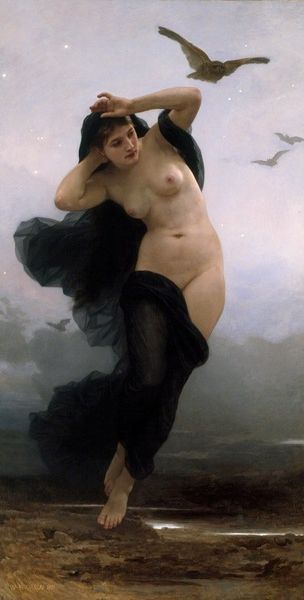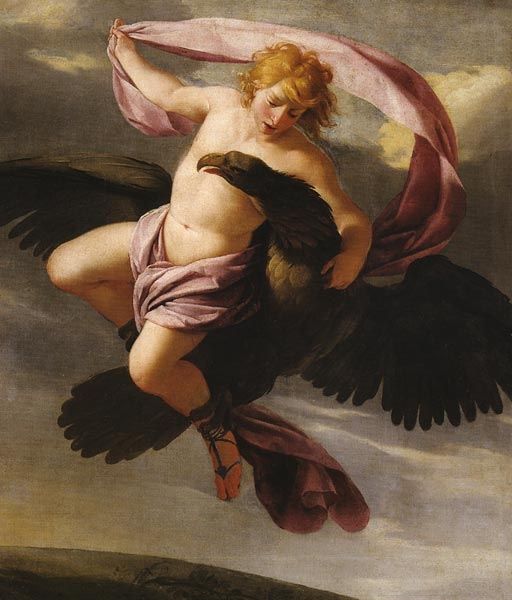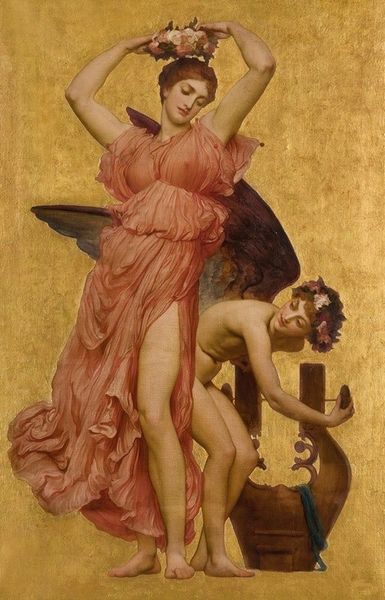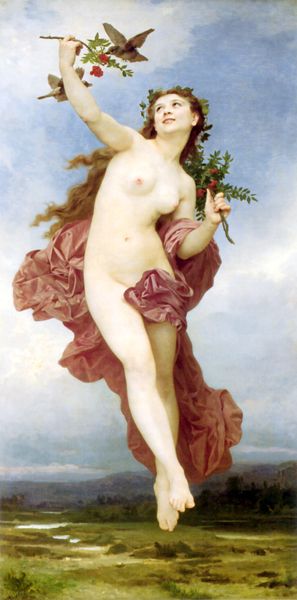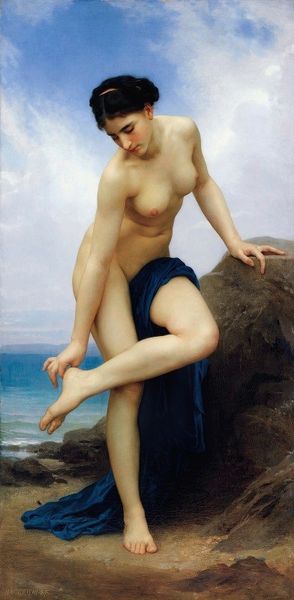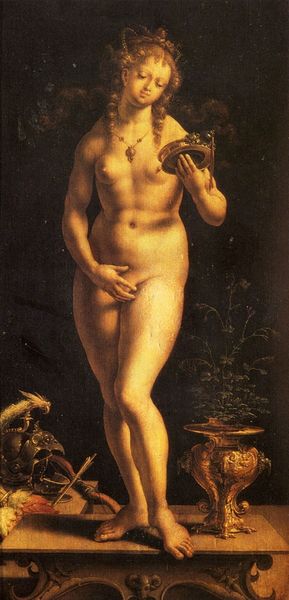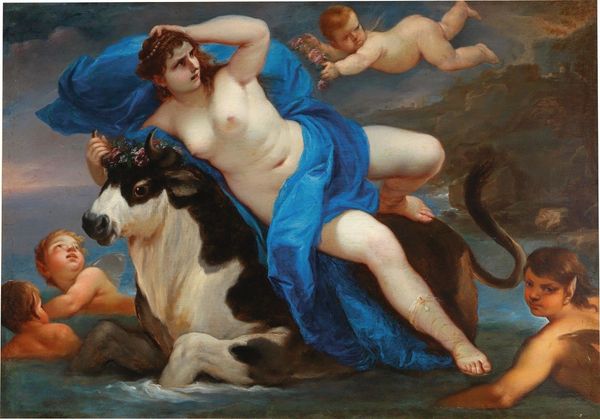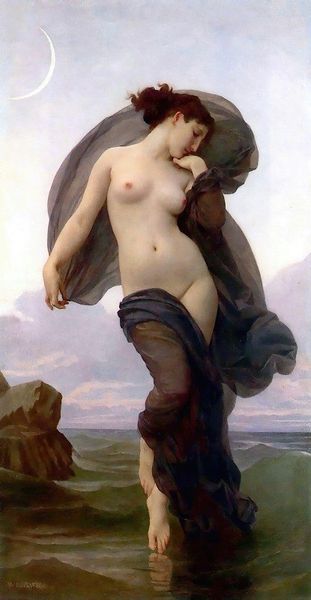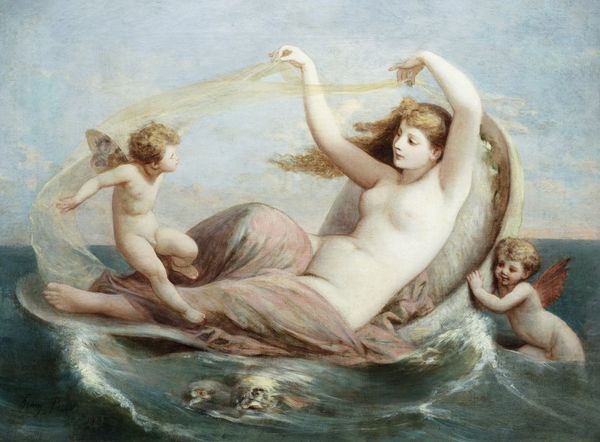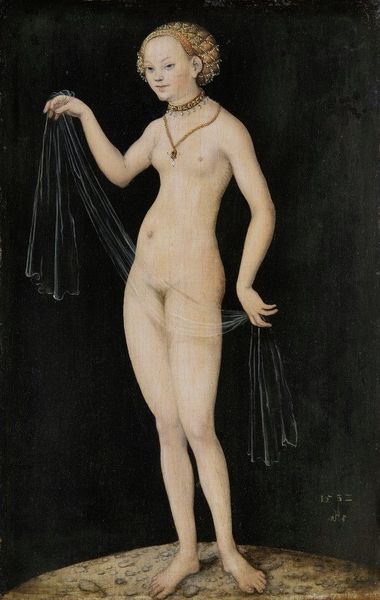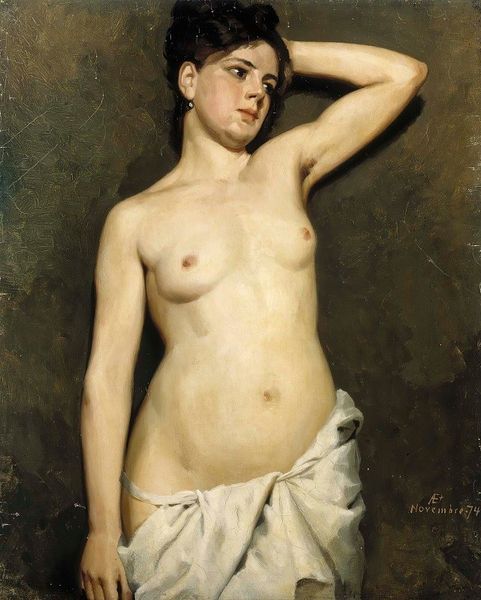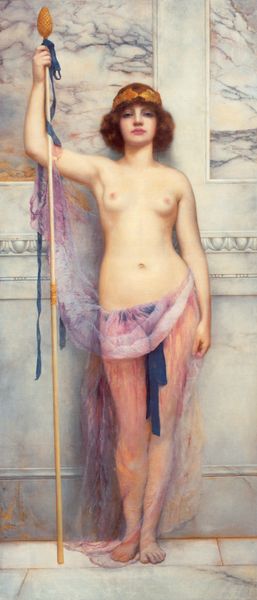
Copyright: Public Domain: Artvee
Curator: Duran’s 1874 oil painting, "Hebe," captures a moment of classical allegory. What's your first impression? Editor: Immediately, I’m struck by the fluidity of the composition. The pose is graceful and the coloring, predominantly blues and pinks, lends an ethereal, dreamlike quality. Curator: Absolutely. Duran's artistic training placed him at the crossroads of academic tradition and emerging realist tendencies, seen clearly here through the romanticized image of a female figure rendered with incredible naturalism. Hebe, the Greek goddess of youth, stands, rather impossibly, upon an eagle, Zeus’s animal, as she prepares to pour nectar, or ambrosia, into a waiting cup. Editor: There’s a distinct use of chiaroscuro—strong contrasts between light and dark. It’s especially apparent in the rendering of Hebe's body and in the eagle's feathers, creating a dynamic surface texture that feels almost sculptural. The eye is drawn to these dramatic contrasts. Curator: Beyond the formal handling, consider the symbolic implications. Duran paints her gaze downward and inward. This feels representative of a transition, or a state of reflective youth that serves as an archetype for the very sustenance of the gods. The work speaks to idealized femininity as essential and intrinsically valuable. It's both of and outside her agency. Editor: That juxtaposition intrigues me, given that she is at the same time bestowing a gift, nectar or immortality. The colors really give the composition depth; how the soft pink drapes contrast against the darker shades of the eagle creates a multi-layered sense of spatial relations. The sky feels a little unresolved, as a backdrop. Curator: The sky could possibly signal a new openness that his academic work was slowly inching towards, by depicting an ideal beauty while breaking academic composition. And, Duran's later portraits do indeed challenge academic dogma through subtle shifts. In "Hebe", his training struggles against his own breaking free of tradition. Editor: So in many ways, “Hebe” reveals an important push and pull between what was valued and what could have been? Curator: Precisely. In decoding this painting, we gain not only insights into Greek myth or Duran's skill but also consider a transitional moment in painting where ideals start dissolving beneath their own weight. Editor: A fitting end to our little study, then, about something so caught between tradition and innovation.
Comments
No comments
Be the first to comment and join the conversation on the ultimate creative platform.
